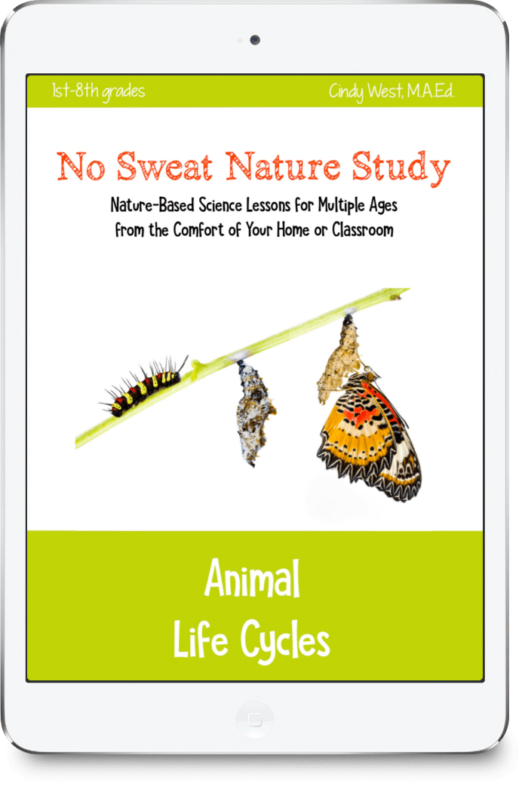Ant Nature Study
Hello, NaturExplorers! This ant nature study will help you to observe what’s going on above ground and imagine what’s going on below ground wherever you see these busy insects.
I know not everyone is a fan of insects, but the insect we’re learning about today is so industrious that I hope you won’t mind.
Industrious Insects
Do you know what industrious means? YOU can be industrious if you’re hard-working and diligent. I bet you know what hard-working means, but maybe we ought to talk about the word diligent. Do you know what that means?
When someone is diligent, they take care to do their work well. Hopefully, you are industrious with your chores and your schoolwork. If you are, that means you work hard and put the effort in to do them to the very best of your abilities.
The insect we’re learning about today is very industrious. It works hard to do the job that it was created to do in its colony (or group). Its job might be to lay eggs, or it might be to tend the eggs, the larva, or the pupa. Or, it might build and repair the nest or forage for food to bring back to the nest.
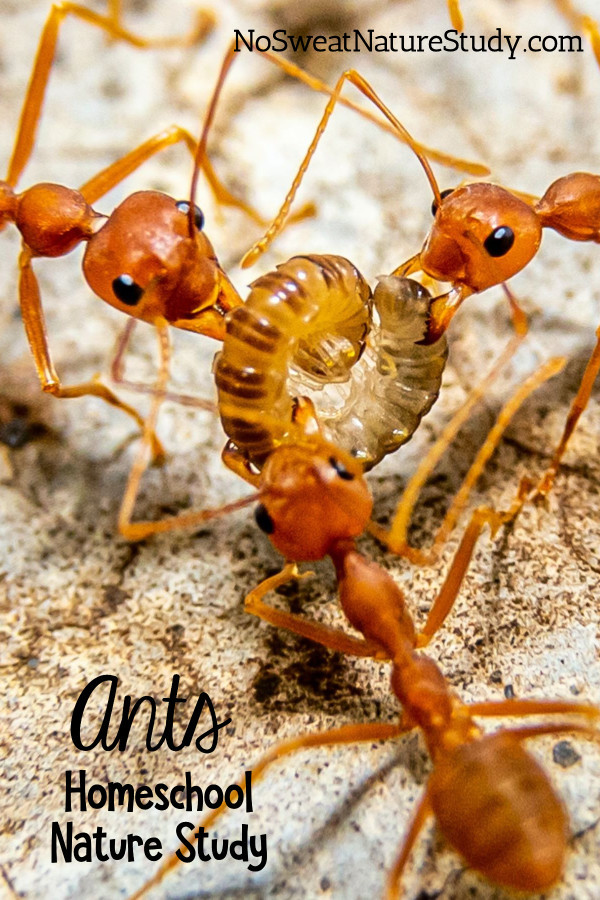
This post contains affiliate links.
Social Insects
Can you guess which insect I’m talking about? Honestly, based on what I’ve told you already, we could be learning about a few different types of insects called social insects. They are insects that live in large groups and work well together to do different jobs in order to keep their communities thriving.
Bees are social insects and so are termites. The ones we’re learning about today, though, are ants! They are very industrious because each and every ant in the colony has a job to do. And it does it diligently.
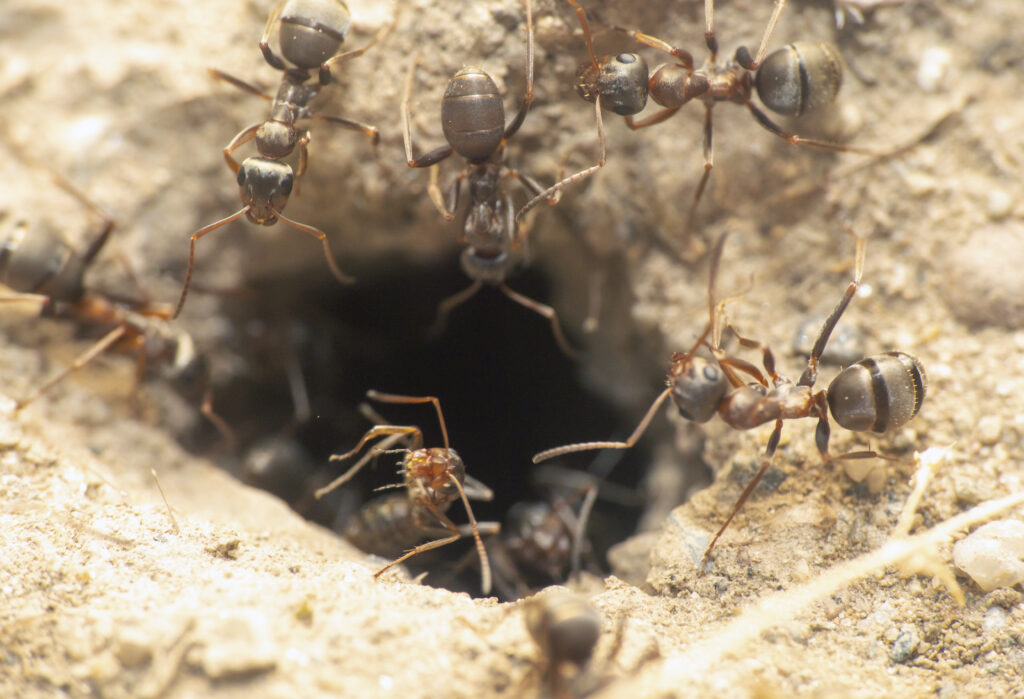
Ant Nature Study
I bet you’ve seen busy ants piling up dirt into the shape of an anthill, right? They clearly look like they’re working hard – and they are! These worker ants are helping to build and repair tunnels that lead to an underground city of sorts.
This underground nest is full of tunnels and little rooms called chambers. One single nest averages around 250,000 ant residents. That means that 250,000 ants are, on average, living in any given underground community. And, all 250,000 of those ants have a job or two to keep their underground city running smoothly and to keep the citizens of the colony healthy and strong.
By the way that underground nest can be 10 feet or more deep into the ground!
Now, unless you have an ant farm, you might not be able to picture what this underground nest looks like. We can’t really see all the busyness that goes on in the underground nest. However, take a look at the pictures I’ve included in this blog post to get at least a decent idea.
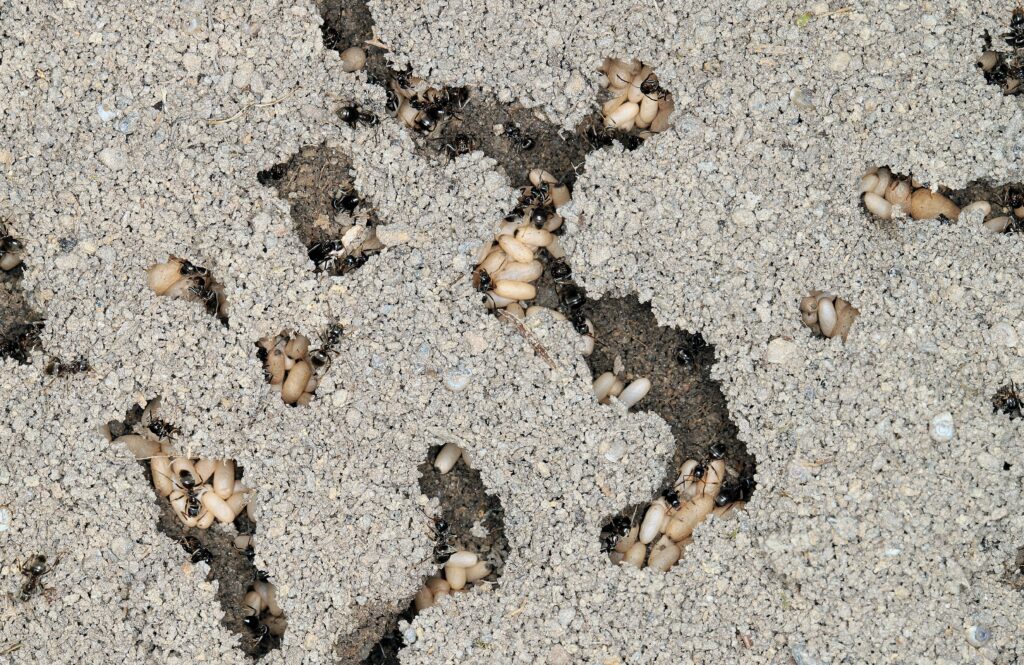
Ant Jobs
Above ground, we often see lots of ants, but we don’t usually see all 250,000 of them, right? That’s because plenty of the workers stay inside the nest to do their jobs.
For example, the ants that tend to the eggs, larva, and pupa rarely make an appearance above ground unless they change jobs at some point. Usually, the ants that we observe above ground are the construction workers who have the job of building the nest. They remove the extra soil, sand, rocks, and other debris that they find when they’re creating those tunnels and chambers.
We might see the ants that are on the cleanup crew removing waste.
We might see the funeral directors who bring out dead ants.
We might see the foragers who go out into the world, looking for food to bring back to the underground city.
And, if necessary, the ants in charge of protecting the colony might come above ground to fight off predators or other threats to the community.
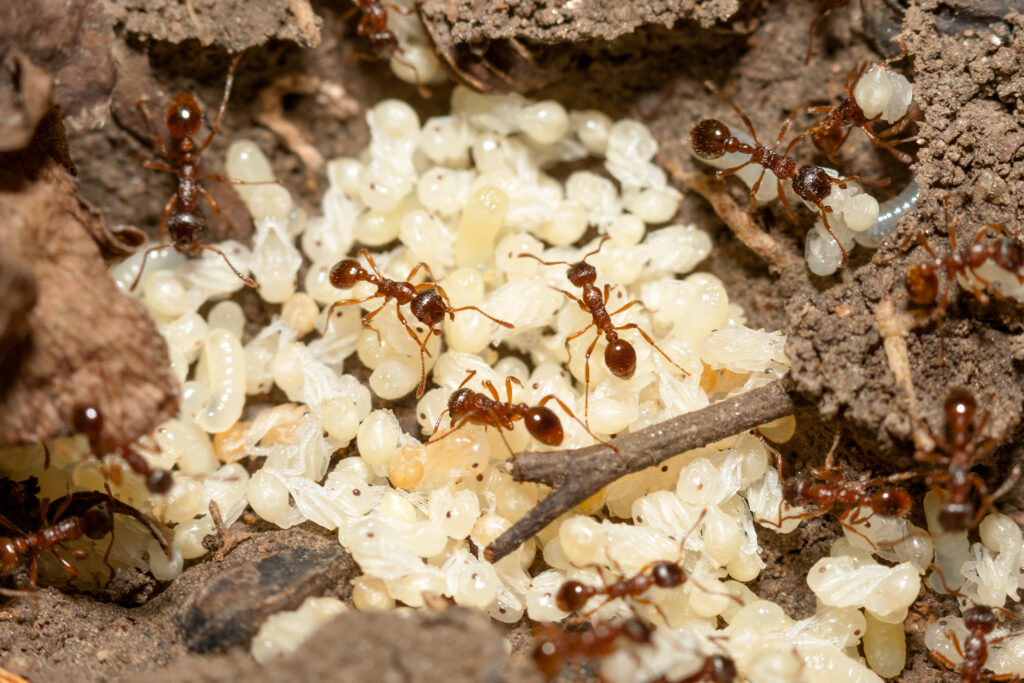
Ant Nature Study Challenge
As you head out for today’s nature walk, bring along your nature journal, colored pencils, and a magnifying glass if you have one. If you don’t have a magnifying glass, don’t worry, you can simply observe with your eyes.
You are on the hunt for an anthill. Search the ground near tree roots, sidewalks, driveways, roadsides, or other places where the soil is fairly easy to see. Once you find a hill, you have two jobs.
First, sketch the hill. Use the magnifying glass if you’d like to see all the bits and pieces of soil that were used to make the hill. By the way, that hill is more than just the debris from building the underground nest. The hill also helps to regulate the temperature in the underground nest and serves as a little bit of protection against predators who might want to eat all of those wonderful ants.
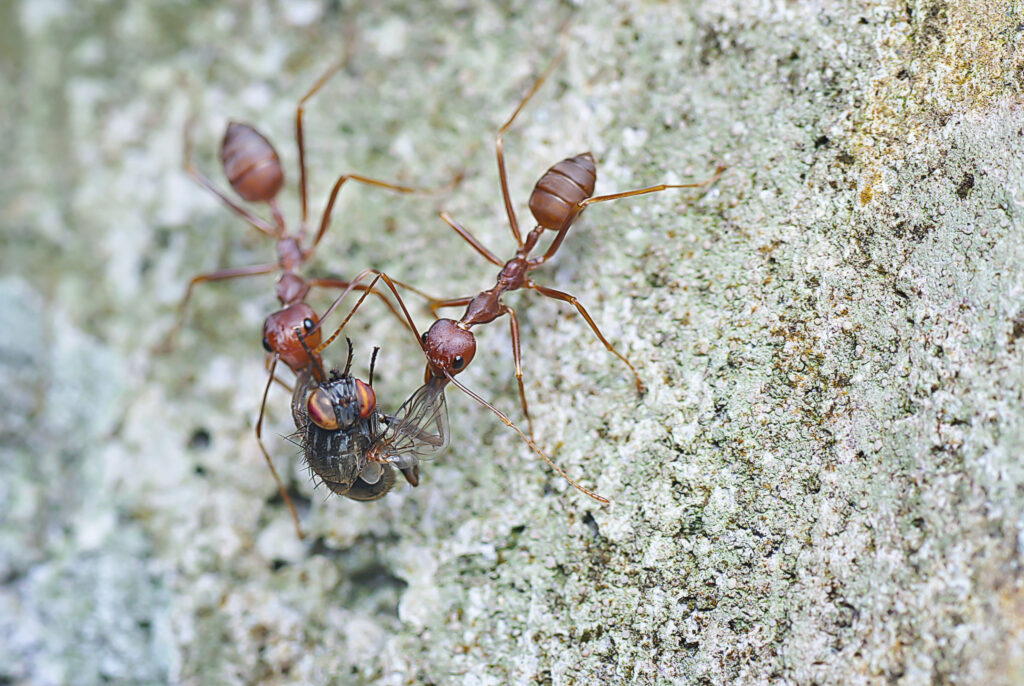
Second, watch for an industrious ant. If you have a magnifying glass, it would be great for you to use to help you see all the body parts so that you can sketch it correctly.
You might already know that all adult insects have three main body parts: a head, a thorax, and an abdomen. They also have six legs that grow from the thorax. (That’s the middle part.) Nearly all insects have two antennae that grow from their head. And, some insects will have wings. (I don’t often see winged ants where I live, so you may or may not.)
Draw a detailed sketch of the working ant. Try to add something to your nature journal page that shows what you believe that ant’s job is. In other words, if your ant happens to be carrying a piece of a leaf or the body of another insect, draw that. Add a label that says your ant is a forger – one that finds food.
More About Ants
We have only scratched the surface of learning about amazing ants! Ants are truly amazing creatures and there is A LOT more for you to learn. I would encourage you to grab a book or two from the library. Here are a few book suggestions for you.
Next week, in our last episode of the spring season of the podcast, we’ll learn about the incredible pollinators who keep our world growing. (Don’t worry, a summer season will be on the way shortly!) Until next week, Happy Nature Exploring!
Links & Resources
Please leave a rating or a review on your podcast app! It helps the podcast to show up for more people…which means more families can enjoy science through the wonderful lens of nature study! Thank you!







